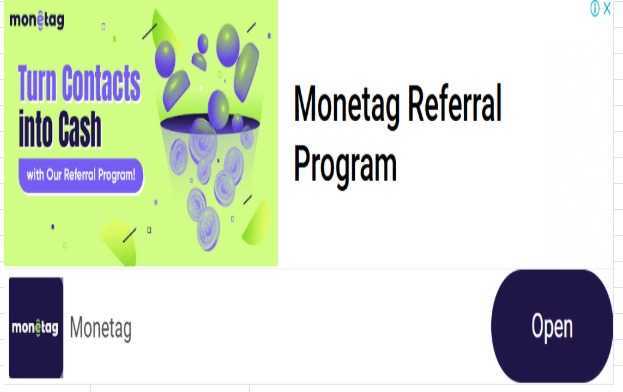Navigating the Unknown: Mastering the Uncertainty Performance Domain in PMBOK® 7th Edition
Introduction
In today’s dynamic project environments, uncertainty is an ever-present factor that can significantly impact project outcomes. The PMBOK® Guide – Seventh Edition introduces the Uncertainty Performance Domain to address this reality. This domain emphasizes the importance of identifying, assessing, and managing uncertainties to enhance project resilience and adaptability.
This blog post delves deep into the Uncertainty Performance Domain, exploring its components, significance, and practical applications. Whether you’re a seasoned project manager or new to the field, understanding this domain is crucial for navigating the complexities of modern projects.
Understanding the Uncertainty Performance Domain
Definition
According to the PMBOK® Guide – Seventh Edition, the Uncertainty Performance Domain “addresses activities and functions associated with risk and uncertainty.”
This domain focuses on the proactive management of uncertainties—both threats and opportunities—that can influence project objectives.
Key Components
The Uncertainty Performance Domain encompasses several critical elements:
Risk Identification: Recognizing potential events or conditions that could impact the project positively or negatively.
Risk Analysis and Prioritization: Assessing the likelihood and impact of identified risks to prioritize response efforts.
Risk Response Planning: Developing strategies to address risks, including mitigation, avoidance, transfer, acceptance, exploitation, enhancement, and sharing.
Risk Monitoring and Control: Continuously tracking identified risks, monitoring residual risks, and identifying new risks throughout the project lifecycle.
Contingency and Management Reserves: Allocating budget and time buffers to address known and unknown risks, respectively.
Stakeholder Engagement: Involving stakeholders in risk management processes to align expectations and enhance decision-making.
The VUCA Context
The Uncertainty Performance Domain operates within the framework of VUCA—Volatility, Uncertainty, Complexity, and Ambiguity.
Volatility
Volatility refers to the rate and magnitude of change in a project environment. High volatility can lead to rapid shifts in project requirements, resources, or external conditions.
Uncertainty
Uncertainty denotes the lack of predictability in events or outcomes. It challenges the ability to forecast project trajectories accurately.
Complexity
Complexity arises from the interdependence of various project elements. It can complicate decision-making and increase the potential for unforeseen issues.
Ambiguity
Ambiguity involves unclear or incomplete information, leading to multiple interpretations and potential misunderstandings.
Understanding and addressing these VUCA elements are essential for effective uncertainty management.
Risk Management Strategies
Effective risk management within the Uncertainty Performance Domain involves several strategies:
Threat Responses
Avoid: Eliminating the risk by changing project plans.
Transfer: Shifting the risk to a third party (e.g., insurance).
Mitigate: Reducing the likelihood or impact of the risk.
Accept: Acknowledging the risk without taking immediate action.
Escalate: Raising the risk to higher-level stakeholders when beyond the project’s scope.
Opportunity Responses
Exploit: Ensuring the opportunity is realized.
Enhance: Increasing the probability or impact of the opportunity.
Share: Allocating ownership to a third party best able to capture the opportunity.
Accept: Taking advantage of the opportunity if it arises.
Escalate: Informing higher-level stakeholders to pursue the opportunity.
These strategies enable project teams to proactively address uncertainties and align responses with project objectives.
Tools and Techniques
Several tools and techniques support the management of uncertainties:
SWOT Analysis
Identifies Strengths, Weaknesses, Opportunities, and Threats to provide a comprehensive view of potential project risks and advantages.
Monte Carlo Simulations
Uses statistical modeling to assess the impact of risks on project outcomes, aiding in decision-making under uncertainty.
Scenario Planning
Explores different future scenarios to prepare for potential changes and develop flexible strategies.
Decision Trees
Visualizes decision paths and potential outcomes, facilitating informed choices under uncertainty.
Risk Registers
Documents identified risks, their assessments, and planned responses, serving as a central reference for risk management activities.
Employing these tools enhances the project’s ability to anticipate and respond to uncertainties effectively.
Integrating with Other Performance Domains
The Uncertainty Performance Domain intersects with several other performance domains:
Planning Performance Domain
Incorporates risk management into planning processes, ensuring that uncertainties are considered in project plans.
Stakeholder Performance Domain
Engages stakeholders in identifying and addressing uncertainties, aligning risk responses with stakeholder expectations.
Measurement Performance Domain
Monitors risk-related metrics to assess the effectiveness of risk management strategies and inform adjustments.
Delivery Performance Domain
Ensures that risk responses support the timely and quality delivery of project outputs.
This integration fosters a holistic approach to project management, where uncertainty is addressed across all aspects of the project.
Case Study: Managing Uncertainty in a Software Development Project
Project Overview: A company embarked on developing a new software application with a tight deadline and limited resources.
Challenges:
- Rapidly changing user requirements (Volatility).
- Unclear stakeholder expectations (Ambiguity).
- Integration with multiple existing systems (Complexity).
- Limited information on potential technical issues (Uncertainty).
Approach:
Risk Identification: Conducted brainstorming sessions to identify potential risks, including scope creep and integration challenges.
Risk Analysis: Assessed risks using qualitative methods to prioritize based on impact and likelihood.
Risk Response Planning: Developed mitigation strategies, such as modular development to handle changing requirements.
Monitoring and Control: Established regular risk review meetings to track and address emerging risks.
Outcome: The project successfully navigated uncertainties, delivering the software on time and meeting stakeholder expectations.
This case illustrates the practical application of the Uncertainty Performance Domain in managing complex project environments.
Best Practices
To effectively manage uncertainties, consider the following best practices:
Foster a Risk-Aware Culture: Encourage open communication about risks and uncertainties within the project team.
Engage Stakeholders Early: Involve stakeholders in risk identification and response planning to align expectations.
Continuously Monitor Risks: Regularly review and update risk assessments to address new or evolving uncertainties.
Allocate Reserves Wisely: Set aside contingency and management reserves to handle known and unknown risks.
Tailor Risk Management Approaches: Adapt risk management strategies to fit the project’s specific context and complexity.
Implementing these practices enhances the project’s resilience and capacity to adapt to unforeseen challenges.
Conclusion
The Uncertainty Performance Domain in the PMBOK® Guide – Seventh Edition underscores the importance of proactively managing the unknowns in project environments. By identifying, assessing, and responding to uncertainties, project teams can enhance adaptability, align with stakeholder expectations, and increase the likelihood of project success.
Embracing this domain equips project managers with the tools and mindset necessary to navigate the complexities of modern projects, turning potential obstacles into opportunities for growth and innovation.


